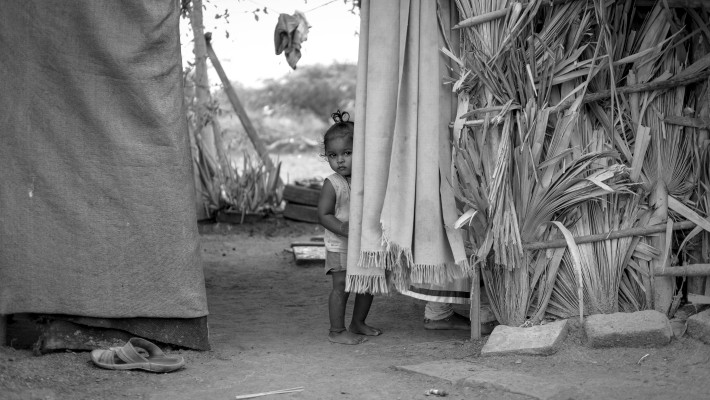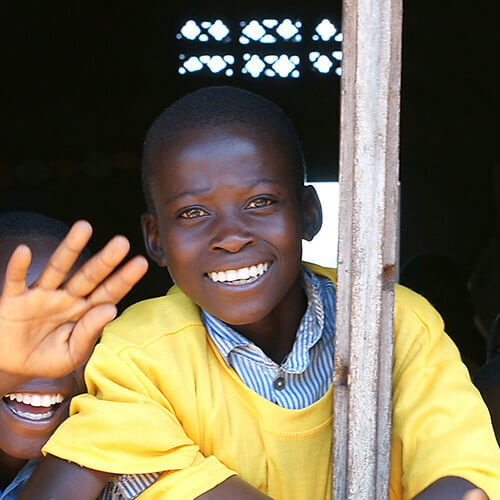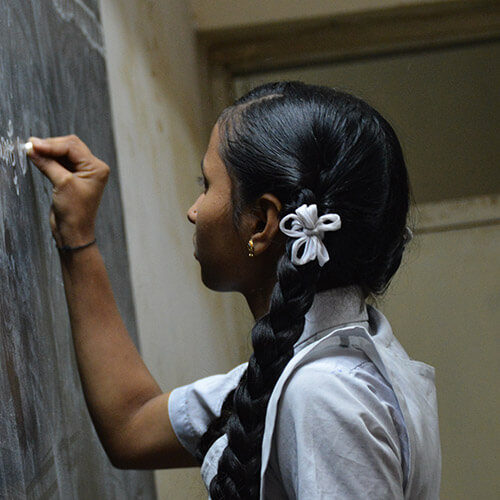In many areas of India, a quiet yet severe issue persists – child malnutrition. Picture a village where the subtle signs of malnutrition in children, such as their thin arms and subdued energy, stand in contrast to the otherwise lively environment. This crisis goes beyond health; it serves as a foundation for various deep-seated social challenges within the community.

Understanding Malnutrition
Multifaceted Nature: Malnutrition in Indian children is not a single-issue problem but has multiple dimensions.
Undernutrition: This is the most visible form of malnutrition, where children appear thin and weak due to an inadequate intake of calories and proteins.
Micronutrient Deficiencies: Often termed ‘hidden hunger’, this aspect involves a lack of essential vitamins and minerals, not immediately apparent but detrimental to health.
Micronutrient Deficiencies: Often termed ‘hidden hunger’, this aspect involves a lack of essential vitamins and minerals, not immediately apparent but detrimental to health.
Prevalence and Severity: Citing the World Health Organization, a significant number of Indian children are affected by malnutrition.
Stunted Growth: Many children experience small growth, a condition where they are shorter than the average for their age due to chronic malnutrition.
Wasting: This refers to children who are too thin for their height, indicating acute malnutrition.

The Ripple Effect of Malnutrition
Physical Impact – Stunted Growth: Malnutrition, especially in the crucial early years of life, can severely impact a child’s physical development. This is most visibly seen in stunted growth, where a child’s height does not meet the typical standards for their age. Stunting is not just a matter of short stature; it indicates a failure to achieve one’s genetic potential for growth due to chronic malnutrition. This physical underdevelopment is often accompanied by a weakened immune system, making children more susceptible to infections and diseases.
Cognitive Impact – Slowed Brain Development: Malnutrition affects brain development and cognitive functioning. A child’s brain undergoes rapid growth and development during the first few years of life. Essential nutrients like iron, iodine, and omega-3 fatty acids are crucial for this process. Malnutrition leads to deficiencies in these nutrients, resulting in delayed cognitive development, poor academic performance, and reduced intellectual capabilities. This cognitive impairment can have enduring effects, influencing a child’s ability to learn and succeed in school and, subsequently, in their professional life.
Beyond Underweight – A Holistic Issue: While being underweight is a common sign of malnutrition, the issue goes beyond just weight. It’s about the lack of nutrients vital for healthy growth and development. Even children who appear physically normal can suffer from ‘hidden hunger’, where they lack essential vitamins and minerals, leading to long-term health problems.
Intergenerational Cycle of Poverty: Malnutrition is both a cause and a consequence of poverty, creating a vicious cycle that can span generations. A malnourished mother is more likely to give birth to an undernourished child, who then grows up with the same disadvantages. This cycle perpetuates itself as malnourished children, especially girls, grow into undernourished mothers. This intergenerational transmission of poverty and malnutrition creates a trap that is hard to escape. The effects are not limited to the individual but impact the community and nation’s economic and social development.
Long-term Socioeconomic Consequences: Children who suffer from malnutrition are less likely to perform well in school, leading to lower educational attainment. This educational deficit translates into reduced employment opportunities and lower income potential in adulthood. As adults, they are at a higher risk of chronic diseases, adding to healthcare costs and reducing productivity. Thus, malnutrition in early childhood sets a trajectory that can lead to lifelong disadvantages and perpetuate socioeconomic inequalities.
Malnutrition and Social Inequities
Malnutrition is a mirror reflecting societal flaws – poverty, gender inequality, and educational disparities. It’s a vicious cycle: poverty leads to malnutrition, which in turn anchors individuals deeper into poverty. Stories from health workers and families attest to how deeply malnutrition is intertwined with social disadvantage.
Current Efforts and Challenges
Despite commendable initiatives by the Indian government and NGOs, tackling child malnutrition is a Herculean task. The challenges are many – from resource constraints to diverse geographic and cultural landscapes. Yet, these efforts are essential stepping stones toward a healthier future.
The Way Forward
What’s needed is a sustainable, community-driven approach. It’s about empowering local communities to take charge, improving education and awareness, and ensuring equitable access to resources. Each of us holds a piece of the puzzle – by contributing in our capacities, we can drive significant change.
Addressing malnutrition is not just about feeding a hungry child; it’s about nurturing a society where everyone has an equal opportunity to thrive. This issue demands more than fleeting attention; it requires a commitment to shake the foundations of these deep-rooted social evils. Let this be a call to action – not just to read and reflect but to participate actively in creating a world where no child’s potential is limited by their nutritional status.









